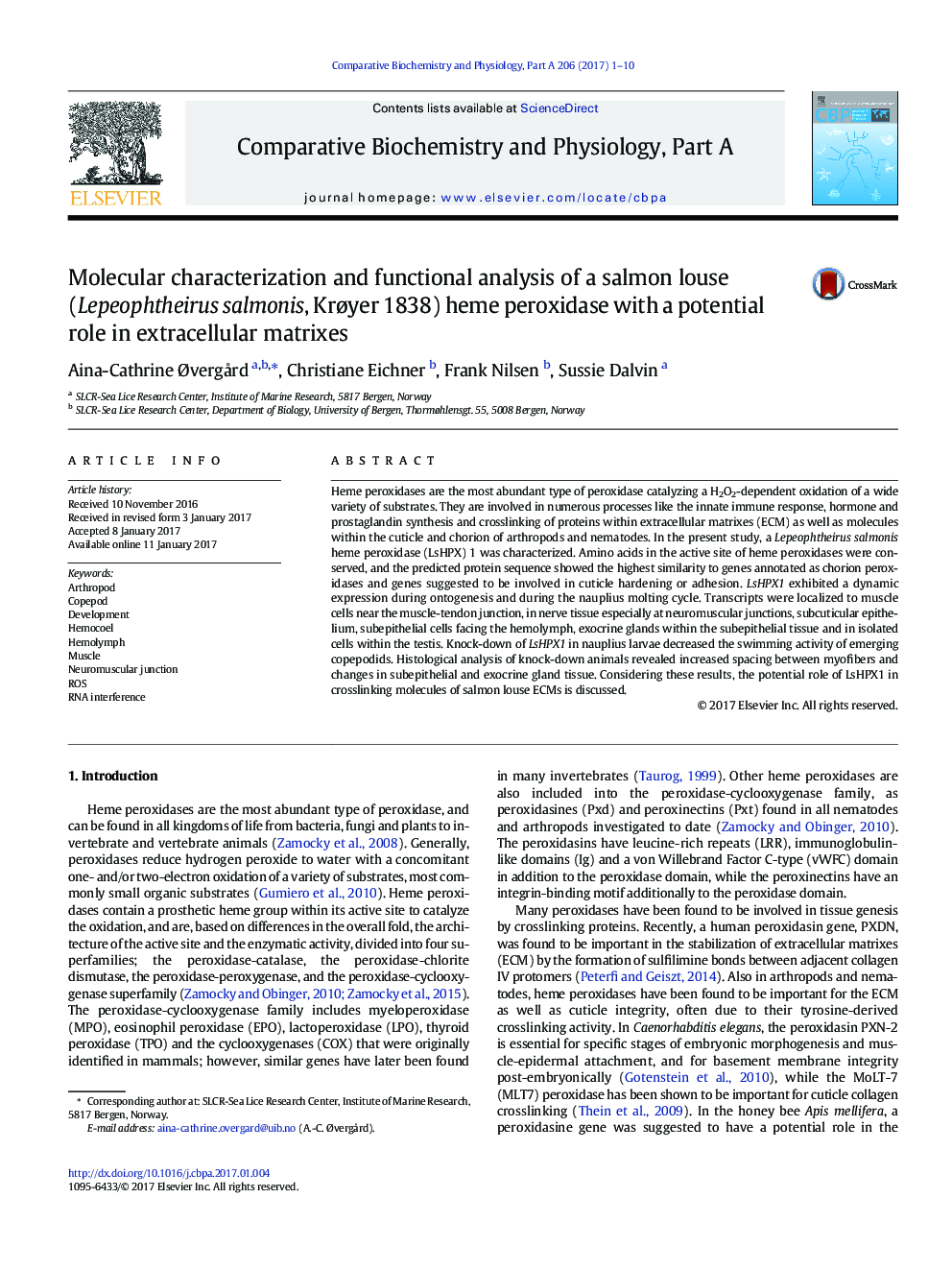| Article ID | Journal | Published Year | Pages | File Type |
|---|---|---|---|---|
| 5510373 | Comparative Biochemistry and Physiology Part A: Molecular & Integrative Physiology | 2017 | 10 Pages |
Abstract
Heme peroxidases are the most abundant type of peroxidase catalyzing a H2O2-dependent oxidation of a wide variety of substrates. They are involved in numerous processes like the innate immune response, hormone and prostaglandin synthesis and crosslinking of proteins within extracellular matrixes (ECM) as well as molecules within the cuticle and chorion of arthropods and nematodes. In the present study, a Lepeophtheirus salmonis heme peroxidase (LsHPX) 1 was characterized. Amino acids in the active site of heme peroxidases were conserved, and the predicted protein sequence showed the highest similarity to genes annotated as chorion peroxidases and genes suggested to be involved in cuticle hardening or adhesion. LsHPX1 exhibited a dynamic expression during ontogenesis and during the nauplius molting cycle. Transcripts were localized to muscle cells near the muscle-tendon junction, in nerve tissue especially at neuromuscular junctions, subcuticular epithelium, subepithelial cells facing the hemolymph, exocrine glands within the subepithelial tissue and in isolated cells within the testis. Knock-down of LsHPX1 in nauplius larvae decreased the swimming activity of emerging copepodids. Histological analysis of knock-down animals revealed increased spacing between myofibers and changes in subepithelial and exocrine gland tissue. Considering these results, the potential role of LsHPX1 in crosslinking molecules of salmon louse ECMs is discussed.
Keywords
Related Topics
Life Sciences
Biochemistry, Genetics and Molecular Biology
Biochemistry
Authors
Aina-Cathrine ÃvergÃ¥rd, Christiane Eichner, Frank Nilsen, Sussie Dalvin,
